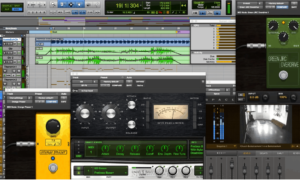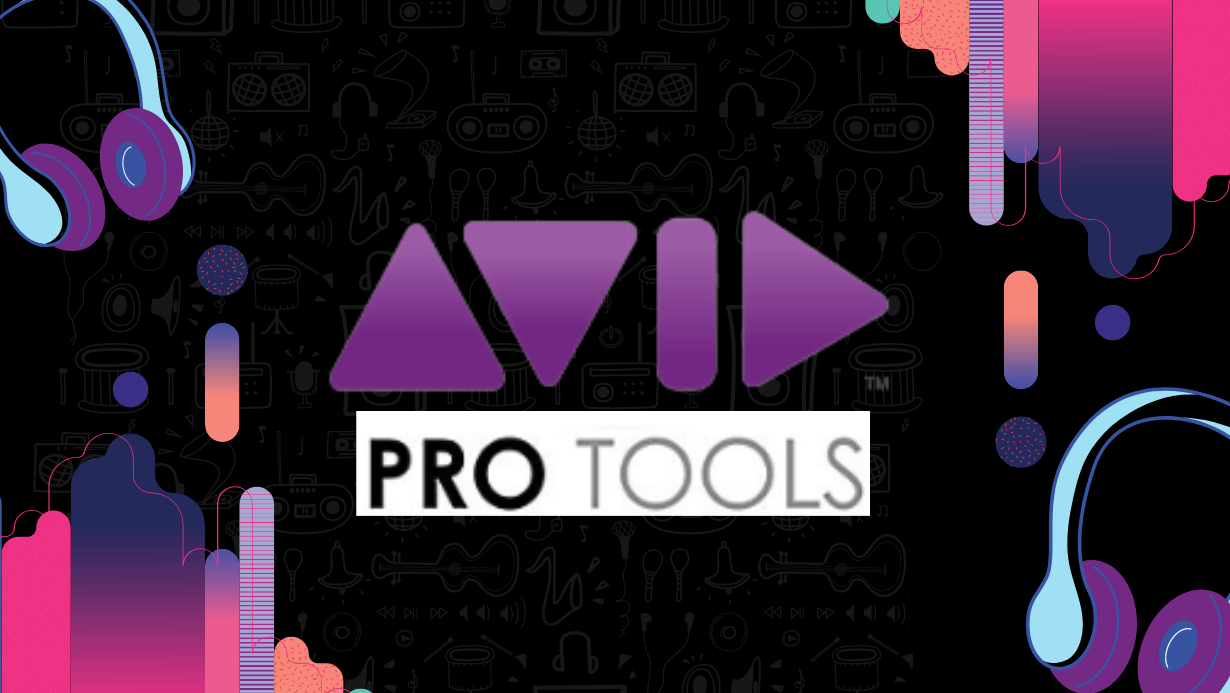Verdict: Avid's Pro Tools is the go-to platform for professional music, film, games, and broadcast production. Avid has made its new line-up of Pro To
Verdict: Avid’s Pro Tools is the go-to platform for professional music, film, games, and broadcast production. Avid has made its new line-up of Pro Tools accessible for every type of user, from the free basic version Intro to the paid versions Artist, Studio and Ultimate. Its updated features make it a great choice for those wanting to work with material recorded in compatible apps. It can be intimidating for those new to the digital audio world; however, I still recommend exploring it, as its features are highly beneficial.
| 16 simultaneous tracks available for editing even with the free version | Professional users may not benefit from the limited audio recording and editing tools |
| 1024 MIDI tracks available | The maximum supported sample rate is limited |
| Full creative freedom over projects | Fewer effects and sound processors are available |
| Compatible with a wide variety of plugins | There are limits to the number of projects and saving options |
| Users can share files easily through Avid Link integration | Composition tools could be more robust |
| Compatible with Mac and Windows | It may not be compatible with all third-party plugins and interfaces. |
| Access to the most up-to-date version with subscription pricing |
Avid’s Pro Tools is widely considered to be the go-to DAW for professional studios and sound engineers today. This is due to its comprehensive feature set and unparalleled workflow. Making it the most popular choice for larger studios needing extensive support networks and outboard hardware. However, if you’re new to Pro Tools, you may ask yourself: is Pro Tools essential to record and producing audio professionally? In this introduction, we will explore the advantages of Pro Tools and why it is the most widely used DAW in professional audio production.

What Is Avid’s Pro Tools?
Pro Tools is an audio editing software suitable for novices and experienced professionals. The software has long been a leader in the digital audio workstations (DAWs) area, making it a perfect choice for singers, musicians, podcasters, and producers. Plus, it offers a free version and advanced features like multitrack recording to help users reach the highest audio and podcast production standards.
This DAW allows users to use plugins for audio effects, EQ adjustments, and high-quality reverb. Additionally, ProTools can be connected to control surfaces to make the mixing process faster and allow you to mix audio and video.
Although it may be tricky to navigate for podcasters with little sound engineering experience, Pro Tools has all the tools necessary to make any audio file sound professional.
Main Features Of The Software
 Handles Large Projects With Ease
Handles Large Projects With Ease
The ability to convert audio to MIDI is not a novel concept, but Pro Tools was only able to do so correctly recently. This allows users to take a monophonic or polyphonic audio track and make a MIDI copy, eliminating the need for a different take.
 Clip Gain
Clip Gain
Pro Tools version 10 introduces Clip Gain, a feature that allows for quick and easy level adjustments to audio clips. Instead of relying solely on the sound, an actual difference in the waveform will be visible, making it easier to sync up dynamics. In addition, the gain change can be copied to any other desired clip.
 Region Grouping
Region Grouping
Using the Region Grouping feature, you can group adjacent audio, MIDI, and Video (Pro Tools HD only) regions together, allowing you to treat them as a single region for tasks like trimming, moving, and duplicating. This is useful for tasks like looping a multitrack drum recording. You can create a ‘drum loop’ region group. And then duplicate it instead of highlighting multiple regions.
 Strip Silence
Strip Silence
Pro Tools has an in-built tool called Strip Silence, which allows users to detect audible information within regions and remove the silences based on a threshold set by the user. This tool is not only limited to a single region, as it can be applied to multiple regions within a session. There are four adjustable parameters which control what is detected as necessary information. As well as the amount of trimming at the region boundaries.
 Updatable plug-ins
Updatable plug-ins
The Pro Tools free trial provides users with over 100 audio plug-ins, which can be used to expand the software’s audio-related capabilities. With these up-to-date plug-ins, users can access a comprehensive library of tools, effects, and instruments to unleash their creativity.
 Folder Tracks
Folder Tracks
Grouping and editing in music production has become much more streamlined with the use of folder tracks. This allows for simple condensing and expanding of selections of tracks. Once you are done editing drums, for example, you can easily compress them all with the press of a button instead of manually adjusting each channel’s size. Furthermore, it greatly enhances the efficiency of the process.
 Space Clips
Space Clips
Space Clips is a useful new feature for Pro Tools that can save dialogue and video game editors a lot of time and hassle. It enables them to quickly and easily space out tracks and adjust their volumes with a pop-up volume slider, eliminating the need for a Gain plug-in.
Are There Any Limitations?
Restriction on the amount of projects and saving optionsThe Pro Tools First free version is limited to only three projects, while the paid versions have no limit. Additionally, Pro Tools First users must save their projects in the cloud. The paid versions can save locally, or in the cloud and all versions include 1GB of free cloud storage. |
Decreased Use of Effects and Audio ProcessingPro Tools First comes with limited software and a sound library compared to the paid versions. The First version only offers 500MB of loops, only 23 effects, sound processors, and virtual instruments. As opposed to the 80 items included in the standard Pro Tools. |
Limit the Amount of Tracks SupportedThe maximum track limit for the standard Pro Tools platform is 128 when using a 48 kHz sample rate and 64 tracks when using a 192 kHz sample rate. Pro Tools Ultimate increases this to 256 tracks with a 48 kHz sample rate. Pro Tools First. However, it has a maximum of 16 simultaneous tracks, regardless of the sample rate. The same limitation applies to the number of hardware-dependent inputs, with the standard Pro Tools offering 32 inputs and Ultimate 192 inputs. Pro Tools First is limited to 4 inputs and 4 audio recording tracks. Virtual instruments, MIDI tracks, and auxiliary inputs are also limited, with Pro Tools First having a maximum of 16. While the standard and Ultimate versions support up to 512. |
Does Not Need the Same Amount of Processing PowerPro Tools First is a free version of the widely-used DAW. And although it has many limitations compared to the paid versions, it does have the advantage of not requiring a powerful computer with 32GB of RAM. The minimum system requirement for Pro Tools First is 4GB of RAM. Thus, making it an accessible way to start experimenting with the software. |

How Much Is Avid’s Pro Tools?
Avid Technology provides three pricing plans for Pro Tools and Pro Tools | Ultimate. The free Pro Tools First version can be found on the Avid website. Pro Tools Education is the most affordable plan at $9.99/month if billed annually. Pro Tools and Pro Tools Ultimate are offered at $29.99/month and $79.99/month, respectively. For Enterprise & Institution pricing, contact Avid Technology for details.
Which Version Of Pro Tools Is Right For You?
If you are a music producer working solely in stereo, Pro Tools Standard is an ideal choice as it is an affordable option that does not require additional hardware. However, those working in music or audio post-production, particularly in surround sound, should consider Pro Tools Ultimate. Not to mention it can be used with or without HDX cards and is more suitable for audio post-engineering workflows.
If you’re new to audio editing, you should use free software like Audacity to develop your skills before attempting to use Pro Tools. But don’t be intimidated by the name! Pro Tools is worth learning whether you’re a beginner or a professional, as it is the industry standard for digital audio production.


COMMENTS